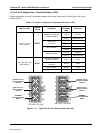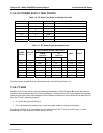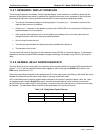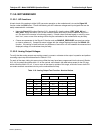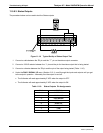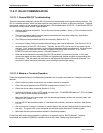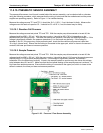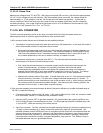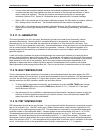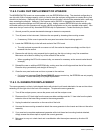
Teledyne API - Model 200EH/EM Operation Manual Troubleshooting & Repair
263
11.5.12. PMT SENSOR
The photo multiplier tube detects the light emitted by the reaction of NO with ozone. It has a gain of about 1:
500000 to 1:1000000. It is not possible to test the detector outside of the instrument in the field. The best way
to determine if the PMT is working properly is by using the optical test (
OTEST), which is described in Section
6.13.6.2. The basic method to diagnose a PMT fault is to eliminate the other components using
ETEST, OTEST
and specific tests for other sub-assemblies.
11.5.13. PMT PREAMPLIFIER BOARD
To check the correct operation of the preamplifier board, we suggest to carry out the optical and electrical tests
described in Sections 6.13.6.2 and 6.13.7.3. If the ETEST fails, the preamplifier board may be faulty. Refer to
Section 11.6.5 on hardware calibration throu
gh the preamplifier board.
11.5.14. HIGH VOLTAGE POWER SUPPLY
The HVPS is located in the interior of the sensor module and is plugged into the PMT tube (Section 10.4.2). It
requires 2 voltage inputs. The first is +15 V, which powers the supply. The second is the programming voltage
which is generated on the preamplifier board. Adjustment of the HVPS is covered in the factory calibration
procedure in Section 11.6.5. This power supply has 10 independent powe
r supply steps, one to each pi
n of the
PMT. The following test procedure below allows you to test each step.
Turn off the instrument.
Remove the cover and disconnect the 2 connectors at the front of the NO
X
sensor module.
Remove the end cap from the sensor (4 screws).
Remove the HVPS/PMT assembly from the cold block inside the sensor (2 plastic screws).
Re-connect the 7 pin connector to the sensor end cap, and power-up the instrument. Scroll the front
panel display to the
HVPS test parameter. Divide the displayed HVPS voltage by 10 and test the pairs
of connector points as shown in Table 11-11.
Check the overall voltage (should be equal to the
HVPS value displayed on the front panel, for example
700 V) and the voltages between each pair of pins of the supply (should be 1/10
th
of the overall voltage,
in this example 70 V):
Table 11-11: Example of HVPS Power Supply Outputs
If HVPS reading = 700 VDC
PIN PAIR NOMINAL READING
1 2 70 VDC
2 3 70 VDC
3 4 70 VDC
4 5 70 VDC
5 6 70 VDC
6 7 70 VDC
7 8 70 VDC
KEY
5
6
7
8
9
10
11
1
2
3
4
Turn off the instrument power, and reconnect the PMT, then reassemble the sensor.
If any faults are found in the test, you must obtain a new HVPS as there are no user serviceable parts inside the
supply.
04521C (DCN5731)



